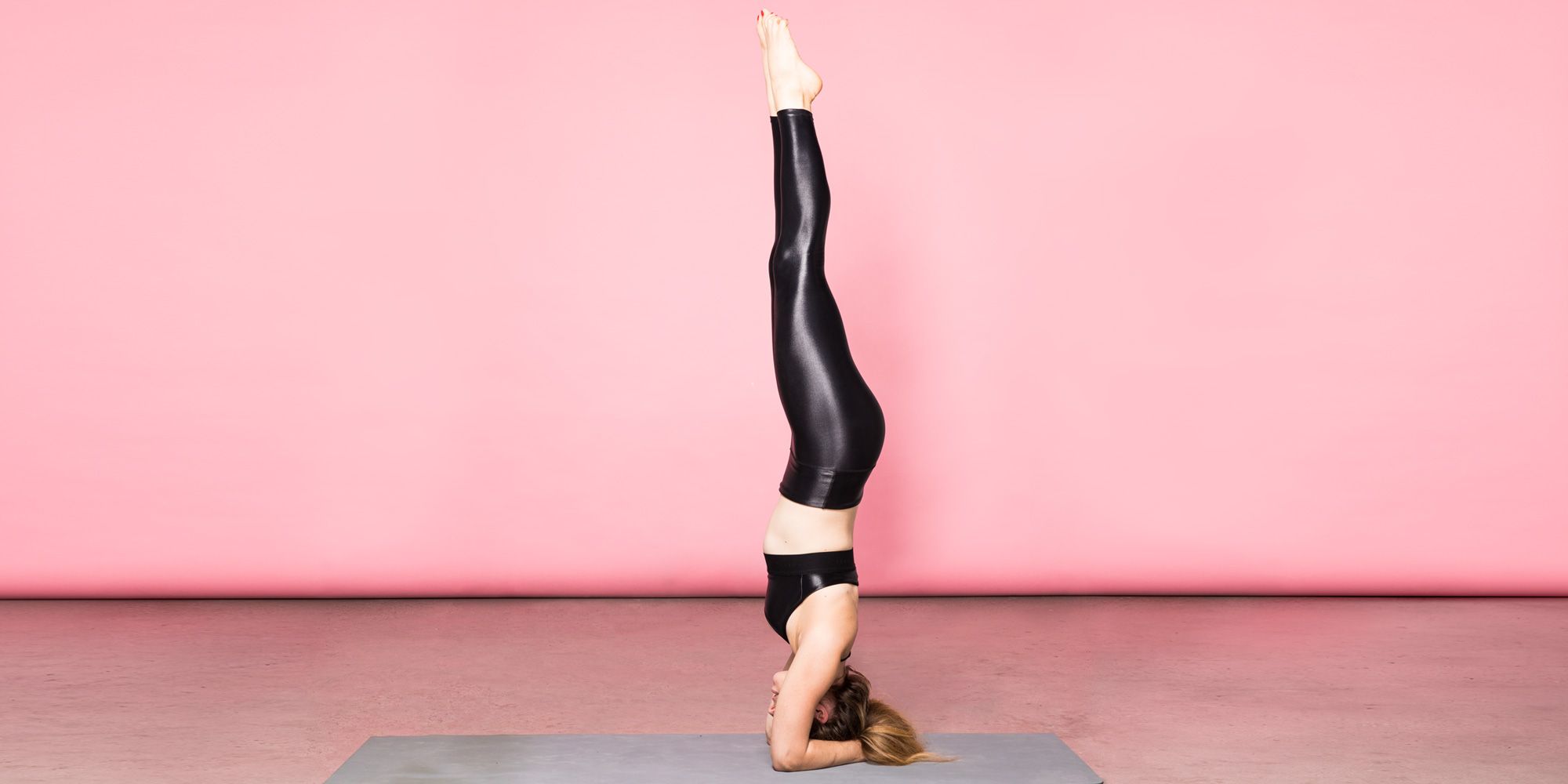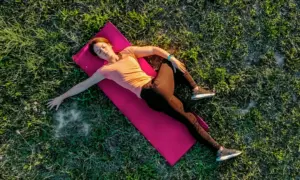Often referred to as the king of asana, the Sanskrit word for posture, the headstand is an advanced yoga inversion. Since the headstand involves turning your body upside down, there are a few safety measures to keep in mind. It’s also essential to enjoy yourself.
Asrael Zemenick, a yoga teacher, Ayurvedic practitioner, and Vedic counselor, emphasizes that the most important aspect of practicing headstands is to have fun. She explains, “Since it’s an inversion, it’s deeply restorative to the nervous system and can be really grounding. It’s not about holding anything too tight. It’s about coming into a place of deep relaxation, gentleness, and playfulness.”
Whether you’re a beginner or looking to perfect your current headstand practice, there are plenty of ways to build upon your current level. Read on to learn about some of the benefits of doing a headstand, as well as some safety and practice tips.
Benefits of a headstand
Headstands offer many health benefits. They may help to:
- calm the mind
- Alleviate stress and depression
- activate the pituitary and pineal glands
- stimulate the lymphatic system
- strengthen the upper body, spine, and core
- enhance lung capacity
- stimulate and strengthen abdominal organs
- boost digestion
- alleviate symptoms of menopause
- prevent headache
Safety measures
In addition to their many benefits, headstands also pose certain risks, such as neck, shoulder, and back pain or injury. You must implement certain safety measures to do it safely. This involves having the necessary strength, alignment, and flexibility.
Here are some safety recommendations to follow:
1- Work with a spotter
Your best option is to work with a spotter. This can be a qualified yoga teacher, fitness expert, or knowledgeable friend.
It’s tricky to check out or think about your alignment when you’re upside down. A spotter can help guide you to align your body correctly and support your body. They’ll also support you as you move in and out of the Asana.
2- Use a wall
As long as you don’t rely on it too much, Zemenick says, “It’s OK to use a wall. You don’t want to get too used to the wall or lean on it too much. But if you’re nervous or afraid, it’s nice to have the wall there for emotional support.”
3- Place folded blankets or cushions around you
As you progress, you can inch yourself further from the wall until you’re able to do a headstand in the center of the room. If you’re practicing on your own at home, place a few folded blankets or cushions on the floor around you. This way if you do tumble over, you’ll have a soft landing.
How to do a headstand?
Before you do a headstand, make sure you feel comfortable. As Zemenick points out, “The most important aspect of this yoga pose is that you’re relaxed going into it because the purpose of the asana is to relax, soothe, and soften the nervous system.”
She reminds students to connect with their breath and create a firm base that’s connected to their center.
Instructions
- Sit in Thunderbolt Pose.
- Measure out the appropriate elbow width by placing opposite hands at the inside base of your upper arms.
- Keep your elbows in this position as you place them down on your mat.
- Bring your hands together to create a triangle shape with your forearms.
- Interlace your fingers, opening your palms and thumbs.
- Place the tips of your pinky fingers together so that the bottom of your hands has a more stable base.
- Place the top of your head on the mat inside your hands.
- Lift your hips and straighten your legs.
- Walk your feet toward your head, bringing your hips above your shoulders.
- Gently bring your knees in toward your chest.
- Hold this position for 5 seconds.
- Slowly straighten your legs.
Best practice tips
1- Avoid compressing your head and neck
Your upper body and core strength should support your balance and stability during a headstand. This ensures you’re not putting too much pressure on your head and neck.
Avoid any compression in this area of your body. If you find that you’re putting too much weight on your head, press into your arms and draw the energy of your elbows inward to strengthen your foundation.
2- Engage your core
Engage your core the entire time, drawing your navel into your spine and keeping your body in alignment.
3- Find the correct spot on your head before placing it on the floor
To find the correct spot on the top of your head, place your palm against your face, starting with the base of your palm at the top of your nose.
Press your hand into your head, and press your middle finger into the top of your head. This is where your head will touch the floor. Stimulate this area and then practice placing this spot on the floor a few times to notice how it feels.
4- Build strength in your arms
Work with a yoga strap if you want to train your arms. This resistance helps to build strength in your arms and prevents your elbows from widening. Simply place a strap above your elbows at the base of your upper arms before moving into the pose.
5- Release fear and anxiety
Remember that it’s natural to experience some type of fear or anxiety related to headstands. Zemenick says: “Sometimes people get really afraid about doing headstands.
Start in a grounded space. This way, even if there’s nervousness or fear about what’s going to happen or if you’re going to fall over, you feel connected to your center. You then automatically have more strength to support yourself.”






















Pingback: How 15 Minutes of Exercise Can Transform Your Health?